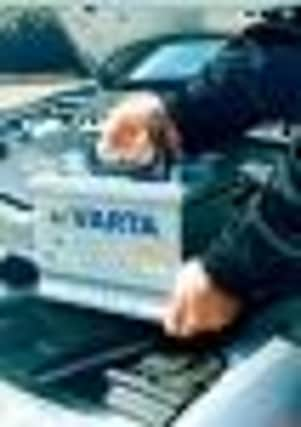Will your car pass the new MOT?


If you’ve been merrily turning a blind eye to an illuminated dashboard warning light in the knowledge that its function isn’t covered by the test, changes brought in this year mean that you could end up with a test failure and a costly repair bill.
From January 1 this year, around 50 new checks have been added to the number of mandatory test items included in the annual MOT by the Department for Transport.
Advertisement
Hide AdAdvertisement
Hide AdThis change has been brought about as a result of a revised EU testing directive.
The new MOT includes additional inspections on features already tested including brakes, lights and steering suspension, but there are also new checks too.
These 50 new checks incorporated into the test include:
* Anti-lock braking systems / Electronic stability control systems
* Tyre pressure monitoring systems
* Supplementary restraint systems including airbags and seat belt pre-tensioners
* Electronic power steering systems
* Electronic parking brakes
Advertisement
Hide AdAdvertisement
Hide AdTo soften the blow, VOSA (the government agency responsible for UK’s MOT) has indicated that any failures that relate to the new test checks will be treated as ‘advisories’ for the first three months of this year.
But from April 1, owners will have until the first MOT renewal date after April 1 to ensure that any malfunction within the following areas is corrected. These are just a few of the changes to the test:
1) Electronic Parking Brake – a vehicle will fail the test if an Electronic Parking Brake light illuminates indicating a fault.
2) Warning Lights – the MOT test now includes checks on the warning lights (where fitted) for headlight main beam, Electronic power steering, brake fluid level, onboard Tyre Pressure Monitoring System, air bags and seat belt pre-tensioner.
Advertisement
Hide AdAdvertisement
Hide Ad3) Electronic Stability Control – checks of the antilock brakes will now include the function of the Electronic Stability Control system where fitted along with the ESC switch and associated wiring.
4) Steering and Suspension – There will be an inspection on the presence and function of steering locks. Power steering fluid levels must be above the minimum level indicated on the reservoir and if split, damaged or missing dust covers on steering and suspension ball-joints allow dirt contamination on the ball joints, a test failure will ensue.
5) Lighting – Lens should be clean so that there is no reduction in the intensity of light produced by lamps. All lights should be correctly seated and positioned. Headlight requirements have been updated to incorporate the characteristics of the latest HID (High Density Discharge) lamps. Headlight washers and levelling systems must not be defective.
6) Electrical Wiring and Battery - an insecure or leaking battery will ensure a test failure along with associated insecure or damaged wiring.
Advertisement
Hide AdAdvertisement
Hide Ad7) SRS Airbag Warning Light – A vehicle will fail if an SRS malfunction light indicates a fault, it’s not working or is missing.
8) Speedometer – A test failure will ensue if a speedometer is not fitted or it’s inoperative, incomplete, not illuminated or its dial glass is broken or missing.
9) Doors – A rear door that can’t be opened from the outside using the relevant control is now a reason for a test failure. To pass the test, all doors must be easy to open and close. Catches, hinges and pillars will be checked.
10) Seats – It must be possible to secure the driver’s seat fore and aft adjustment mechanism in two or three positions. With electrically adjusted seats, the electric motors must also move the seat fore and aft.
Advertisement
Hide AdAdvertisement
Hide Ad11) Exhaust – A missing catalytic converter fitted as original equipment will now be a point of failure.
12) Fuel System – Any damaged or chafed fuel pipes will result in a failure of the test if it is judged to affect the roadworthiness of a vehicle or its trailer.
For more information on the MOT test, visit www.direct.gov.uk/en/Motoring/OwningAVehicle/Mot/DG_4022109 or www.theaa.com